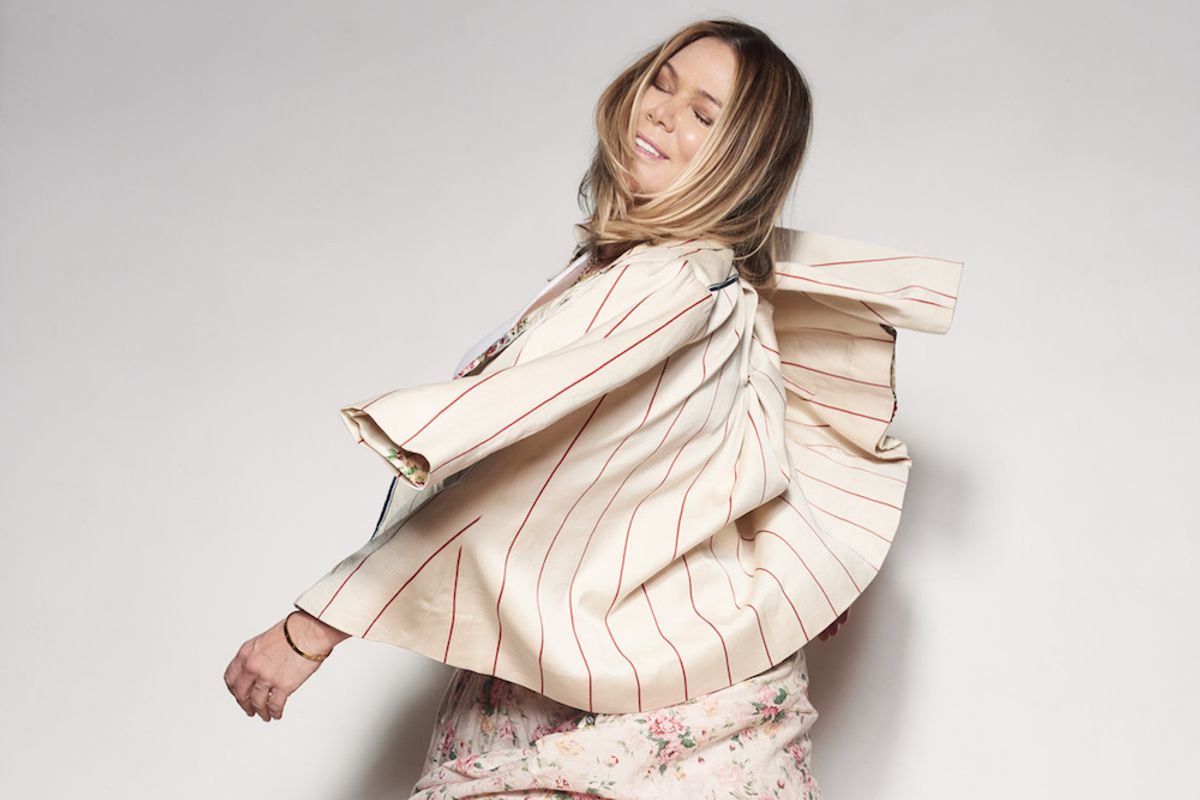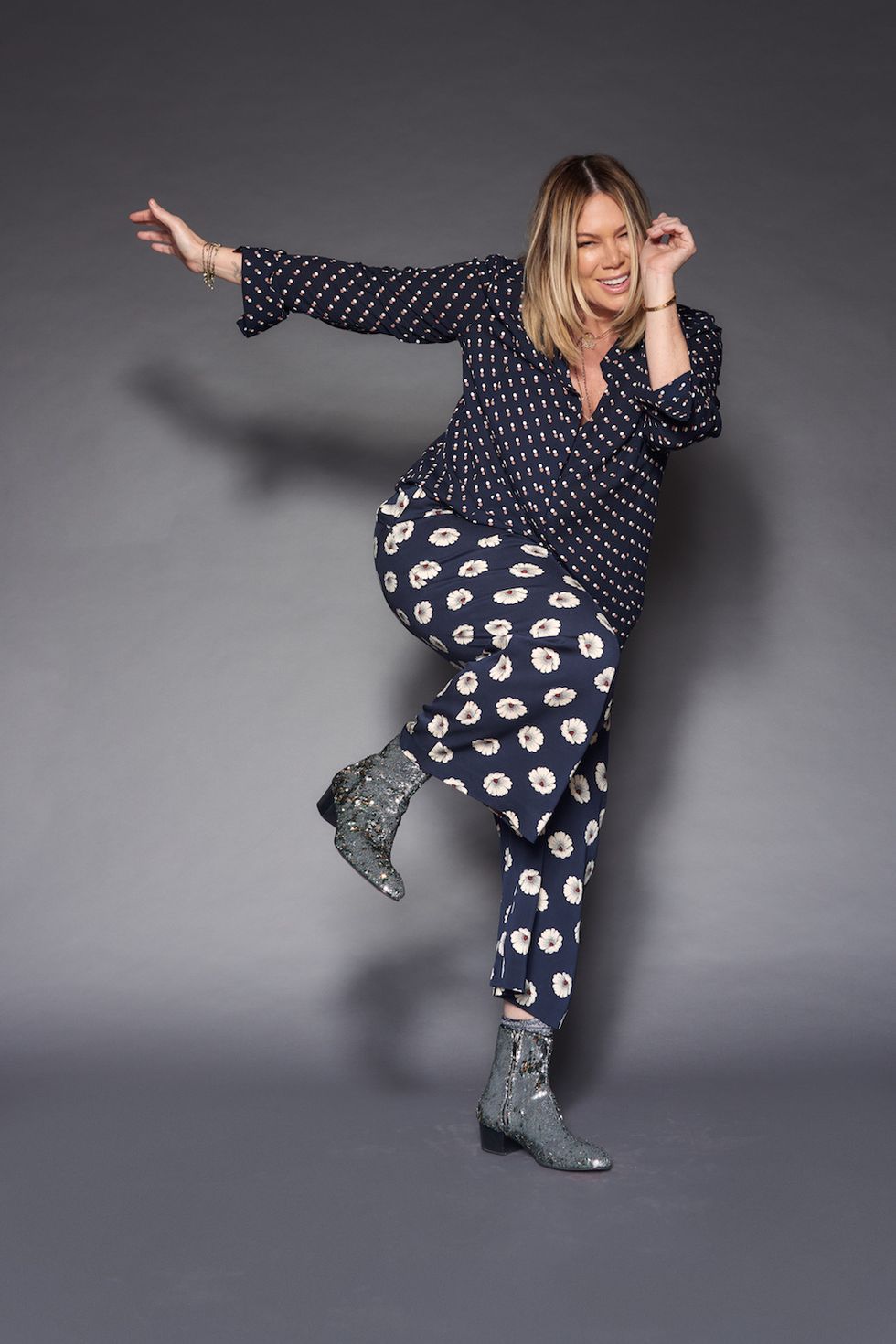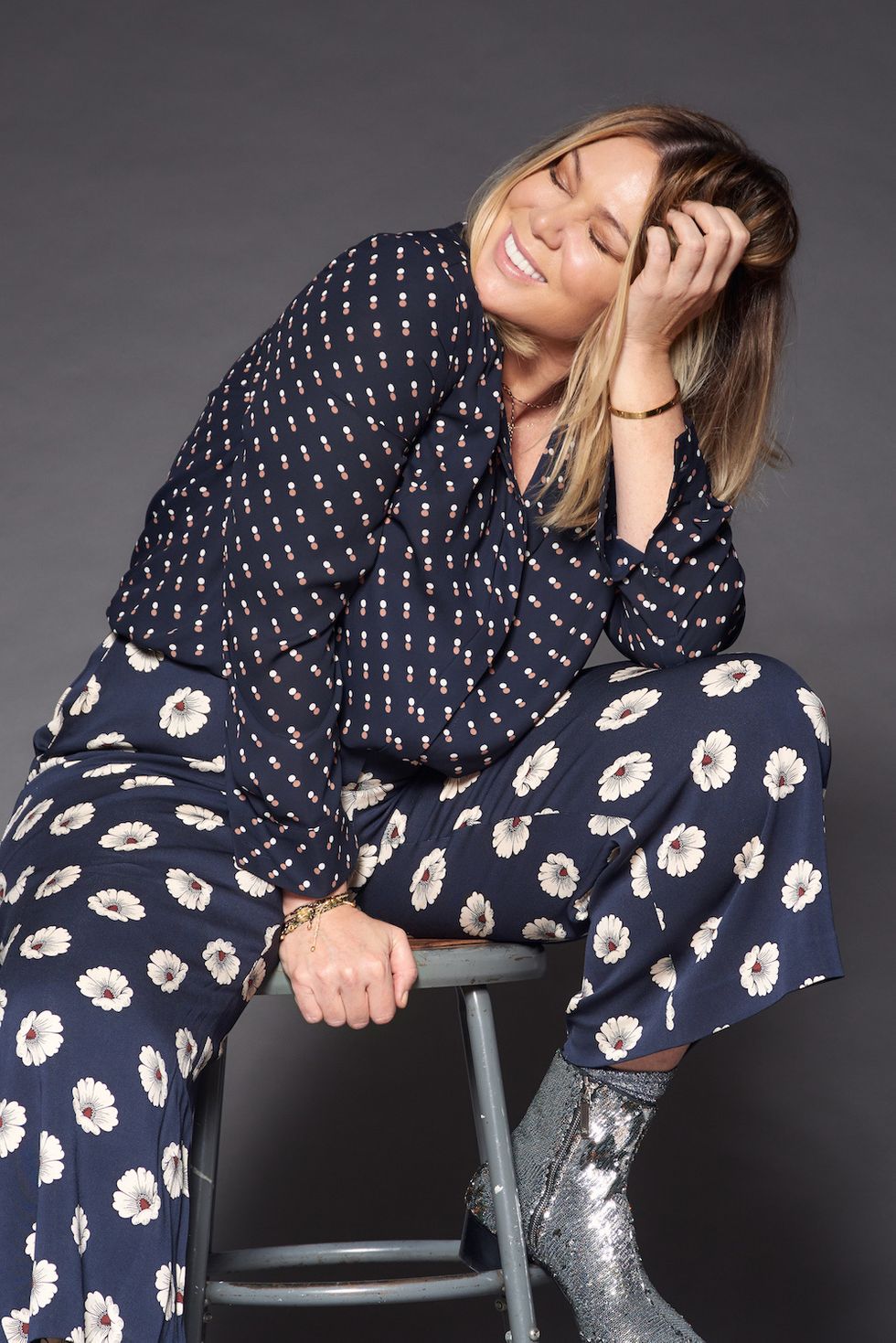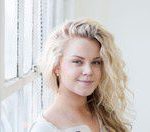
It’s a humid afternoon in New York City, and I’m sitting in a crowded restaurant on 29th Street and Seventh Avenue waiting to interview an artist I’ve admired since I first started dancing—this is a major fan-girl moment for me.
When Mia Michaels arrives, she enters with the kind of confidence and energy that makes people stop and take notice. She greets me with a warm hello and a tight hug. For an artist with a resumé like hers, I’m surprised by how easy she is to be with. “Do you mind if I get a coffee?” she says immediately. She’s going to need it—after our interview, she’ll rush directly to her cover photo shoot before teaching a master class at Broadway Dance Center this evening. Tomorrow, she’ll be walking the New York Fashion Week runway for the Chromat fashion label, and later this week she’ll be on a flight to Chicago for another master class, before finally heading to Tahiti for the first vacation she’s had in months. “It’s been a very intense year for me,” she says.
She’s talking, in part, about Mia Michaels Live, a new convention she started. “MML is about tapping into yourself and remembering why we dance,” she says. “It’s meant to be a kind of transformative retreat.” At the one- to two-day workshop, dancers ages 9 and up take movement and personal growth classes from Michaels and compete for a chance to be signed to MSA talent agency or a full scholarship to study at Broadway Dance Center.

Photo by Jim Lafferty
Last year Michaels added the title of author to an already impressive list of professional credits that includes three Emmy Awards for her work on “So You Think You Can Dance,” choreographing the Broadway musical Finding Neverland and directing/choreographing the 2016 New York Spectacular Starring the Radio City Rockettes. Her memoir, A Unicorn in a World of Donkeys: A Guide to Life for All the Exceptional, Excellent Misfits Out There, is part autobiography, part workbook and part motivational self-help book to encourage people to embrace the “unicorns” they were born to be. A unicorn is, Michaels writes, “an exceptional person who revels in his or her peculiarity, despite the tremendous pressure—from parents, teachers, friends, boyfriends, girlfriends, society in general—to be just like everyone else.”
Michaels herself has always felt like a bit of a misfit. She grew up with metal braces on her legs. “My hip, leg and feet bones weren’t developing at the same rate, making one foot bigger, and my hips turned inward,” she writes. “My looks were always considered bizarre. I was taller and thicker than anyone in my class, including the boys. The other kids looked at me like I was an alien.”
Michaels says her struggle to step into her own uniqueness rather than conform to societal expectations has been pivotal to her success. As an educator, she’s affectionately known to her students as “Mama Mia.” “I use the term to let students know that my class is a safe place. I may be hard on them, but it always comes from a place of love,” she tells me. “Whenever you put ‘Mama’ in front of your name, it’s comforting. They giggle at first, but they get it.”

Photo by Jim Lafferty
As we settle into our seats at the table, across from each other, Michaels begins articulating a message of positivity and hope for the future of dance. The woman in front of me is self-reflective and generous. Over the course of her career, she’s garnered a wealth of knowledge that she’s simply bubbling to share.
DT: You mentioned it’s been a big year for you. Can you tell us more?
MM: It’s been a year of transitions and a year of growth. I feel like I’m really coming into my own more than ever. Particularly as a woman and as a human, as opposed to Mia Michaels the choreographer and director. I had focused so much of my life on being that one thing, that I lost a lot of myself inside of it. I was too focused on achieving success and achieving a certain status of artistry. Unless you’re really good at balancing your life, it’s easy to get caught up in that.
DT: What are you focusing on in your career right now?
MM: I’ll always have my hands in choreography, but what really makes me tick isn’t the steps or creating movement anymore. What I find most rewarding right now is making a difference in people’s lives in a positive and empowering way. I find it important to share all of the lessons I’ve learned during my time in the industry and in life. I’m able to be “Mama Mia, Queen Unicorn” right now, and help guide the younger generation, as well as my fellow teachers and choreographers.
DT: What propelled this new direction?
MM: I think writing my book definitely was a big catalyst for the change in myself. As I reflected on my life and all of the things I’ve done and the lessons I’ve learned, I’ve realized that it was all geared around the dance world. I feel like I’ve climbed that mountain, and I’ve had a blast doing it. I’ve had heartbreak and joy and wins and losses. Now the choice is, do I stay on that mountain and continue to work to be relevant, or do I jump down and find another mountain? Our egos love to stay where we are celebrated and where people love us. But I have to keep pushing forward. If I didn’t push myself, I’d still be doing “The Bench” routine [Calling You, from Season 2 of “So You Think You Can Dance”] today.
I want to explore what life has to offer—like being an author, a plus-size model, a motivational speaker, an entrepreneur, a business person. I just feel like I have all of it inside me. If I only stay in the dance world, it won’t be fair to me or to the rest of the world.

Photo by Jim Lafferty
DT: Looking back, how do you view your contribution to dance?
MM: I think I was put on this earth to be the choreographer who made contemporary dance commercial. That’s what I did. I took a concert-dance background, created my own style and put it in a commercial space. I brought it to the masses. People didn’t even know what contemporary was before. I feel that I was the one who was supposed to kick the doors open for all the generations behind me. I did it for Stacey [Tookey] and Travis [Wall] and Sonya [Tayeh]. All these beautiful young talents are now thriving, in part because I made it accessible and relatable. I’m very proud of my role. I’m proud to have paved the way. In a weird way, I feel like my job is done as a choreographer.
DT: Is there a defining moment in which you found your voice as an artist?
MM: Yes, I was in Greece in early 2000. I was improvising in a studio on a day when it was raining. The air was humid and we were all sweaty. Everyone was dancing in the room and the lights were down. I was doing movement that was predictable and typical of how I was trained, and then all of a sudden something broke inside of me. It was like an alien creature started moving. It felt so different and so weird. I fully believe that in that moment, Mia Michaels was born. Then I took that feeling and ran with it.
DT: What do you look for in the dancers you work with?
MM: After so many auditions, I realize that the dancers I gravitate toward are the colorful ones. The ones who are different. Those are the unicorns. They inspire me because they are a version of me. They feed me as an artist.
Everybody in the dance world is trained the same. We’re like soldiers. As a choreographer, you can hire amazing technicians, but it will still feel empty because there’s no substance to them. Once dancers find that technique and discipline, they’ve got to let it go and just fly. I won’t be able to draw from them emotionally or artistically if they just give me steps. I’m allergic to just steps. I need to build worlds and tell stories.
DT: Has that changed your teaching style?
MM: Absolutely. Nowadays kids and parents are way more sensitive. Back in the day you could get screamed and yelled at, and that was just how it was. We took it because that’s just how we were trained. Now, teaching is much more about communication and how you deliver your message so your students can absorb it. If you don’t, you’ll create a wall.

Photo by Jim Lafferty
DT: You also have advice for them on the value of aging, right?
MM: As you get older, you dance less because your body doesn’t support it anymore, and that’s OK. Be OK with that. You have nothing to prove to your students. Standing in the front of the room and dancing with them doesn’t make you a great teacher. You can let that go at some point. When you’re in the mirror dancing, you’re looking at yourself, but when you put your back to the mirror, you are completely focused on your kids. When I got older and I couldn’t get my leg up or dance anymore, I became a much better teacher because I was focused on others instead of myself.
At 52 years old, I want people to know that life should just be getting better and better. You should feel more fulfilled, more sexy, more alive now than ever.
DT: You mentioned you have begun working as a plus-size fashion model. Can you talk a little about body image?
MM: I’ve spent my whole life hating on my body. The dance world told me, “You’re fat. You’re a rebel. You’ll never dance.” I was essentially laughed off the stage when I was 15 years old because of my body. I quit dancing in that moment and became a choreographer so that I could be behind the scenes and not be laughed at anymore. That started my journey as a creator, which was of course a blessing. I believe things happen for a reason and that that particular incident pushed me into being a creator of movement.
For the full article, pick up a copy of DT‘s January issue here.



